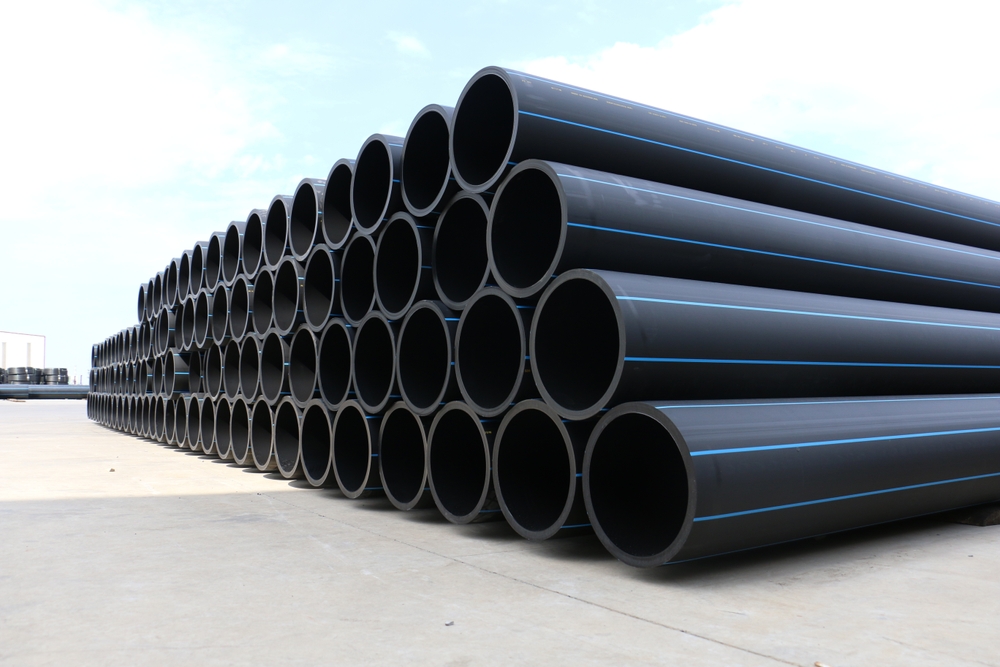Where to Find hdpe pipe in stock Midland TX for Immediate Delivery
The Essential Actions for Successful Installation of HDPE Pipe in Your Next Project
Successful setup of HDPE pipe calls for cautious preparation and implementation. Key actions include examining task requirements, preparing the website, and choosing proper joining strategies. Each stage plays an essential role in ensuring the stability and performance of the pipe. Comprehending these vital actions can greatly affect the total success of the project - hdpe pipe fittings Midland TX. The nuances of each step might hold the trick to getting rid of common challenges faced during installment.
Comprehending the Benefits of HDPE Pipe
High-density polyethylene (HDPE) pipeline uses countless advantages that make it a preferred selection for various applications. Its high resistance to deterioration and chemicals assurances sturdiness popular atmospheres, greatly prolonging the life expectancy of installations. Furthermore, HDPE's flexibility enables simpler setup, specifically in difficult surfaces, as it can flex without breaking. The lightweight nature of HDPE pipe simplifies transport and handling, lowering labor costs throughout installation.
Furthermore, HDPE pipe is known for its reduced friction coefficient, which enhances liquid flow and reduces power intake. Its seamless building and construction reduces the risk of leakages, adding to far better resource monitoring and ecological defense. On top of that, HDPE is recyclable, straightening with sustainable techniques and decreasing ecological influence. On the whole, the mix of stamina, flexibility, and eco-friendliness makes HDPE pipeline a premium selection for a wide array of projects, from water distribution to commercial applications.
Planning Your HDPE Pipe Installation
When planning an installation of HDPE pipeline, mindful consideration of a number of key aspects is important to safeguard an effective project. Job managers have to evaluate the certain demands of the pipe, including the planned use, flow prices, and ecological problems. Understanding these criteria will direct the choice of appropriate pipe dimensions and product quality.
Next, timelines should be established, considering procurement routines and any kind of prospective delays. Coordination with neighborhood authorities for authorizations and regulative conformity is additionally necessary. Additionally, a detailed budget must be prepared, incorporating all prices connected with products, labor, and equipment.
It is essential to engage a certified team experienced in HDPE pipe setup. Their experience will certainly assist mitigate risks, assurance adherence to sector requirements, and inevitably add to the job's success. Complete planning prepares for a smooth installment process and lasting performance of the HDPE piping system.
Preparing the Site for Installment
Appropriate website prep work is necessary for the successful installation of HDPE pipe. Before installment starts, the site needs to be completely examined to assure it satisfies all necessary requirements. This consists of checking the ground for existing frameworks, utilities, and prospective threats that could impede the setup procedure.

Appropriate altitude and placement ought to be established to preserve a regular slope for water drainage functions. Proper drainage around the setup site is additionally imperative to prevent water accumulation, which can bring about complications down the line.
Methods for Signing Up With HDPE Pipes
Accomplishing a dependable link between HDPE pipes is essential for ensuring the integrity and longevity of the installation. Different strategies exist for joining these pipes, each fit for different project requirements. Combination welding is one of the most common techniques, using warm to bond the pipeline ends with each other, developing a smooth and sturdy connection. This strategy can be additional categorized right into socket combination and butt fusion, relying on the pipe setups.
Mechanical fittings are an additional alternative, utilizing clamps and threaded connectors to join areas of HDPE pipe. While normally faster to mount, they may require additional maintenance over time. Electrofusion is a specialized method that entails making use of electrical present to warm and fuse the pipes through specifically developed installations, making certain a strong bond. Selecting the proper signing up with method is crucial, as it directly influences the general performance and dependability of the HDPE piping system in the intended application.
Checking and Inspection of Installed Water Lines
The testing and evaluation of mounted HDPE pipes are essential to guaranteeing their performance and longevity. This process incorporates aesthetic examination methods, stress screening approaches, and leak discovery treatments to determine prospective concerns. By employing these approaches, professionals can validate the integrity of the installation before it is taken into usage.
Aesthetic Inspection Techniques
Utilizing effective aesthetic assessment strategies is vital for guaranteeing the honesty of installed HDPE pipelines. Inspectors should methodically analyze all visible sections of the pipeline to identify any type of signs of damage, imbalance, or incorrect setup. Secret indications to assess include joint honesty, surface area irregularities, and links. Examiners might make use of devices such as multiplying glasses or electronic cameras to enhance exposure and detail. It is vital to look for signs of ecological anxiety, such as bending or excessive flexing, which can compromise performance. Consistent documents of searchings for permits tracking modifications in time and assists guide necessary repair services. By sticking to recognized visual evaluation protocols, task teams can notably reduce the risk of future failings and assure long-term dependability of the piping system.
Pressure Examining Techniques
Aesthetic inspection serves as an initial step, yet it is not adequate by itself to guarantee the efficiency of mounted HDPE pipes. Pressure testing methods are necessary for making certain the integrity of these systems. Typically, hydrostatic screening is used, where the pipelines are loaded with water and subjected to stress levels above the desired operating stress. This technique helps determine weak points or potential leaks. Pneumatic testing can also be utilized, although it brings greater dangers due to the compressibility of air. No matter the approach chosen, sticking to industry requirements and safety and security protocols is vital. After performing pressure examinations, thorough paperwork is needed to validate the results and validate that the installation meets all functional needs prior to proceeding to the next phase of the job.

Drip Discovery Procedures
Exactly how can one guarantee that installed HDPE pipelines are without leaks? Reliable leak detection treatments are vital to safeguard the integrity of the system. Originally, aesthetic assessments must be executed, searching for indicators of water accumulation or soil disintegration around pipeline joints. Following this, pressure screening can confirm the system's strength. A common approach is the hydrostatic test, where water is presented under stress, keeping an eye on for decreases that show prospective leakages. Additionally, progressed innovations, such as acoustic sensing units or infrared thermography, can discover leakages that may not be noticeable. Regular surveillance and maintenance more contribute to the longevity of HDPE pipes, ensuring they remain leak-free throughout their operational life-span. Correct documents of these treatments is crucial for compliance and future recommendation.
Upkeep Tips for Long-Term Performance
To guarantee the long life of HDPE pipelines, establishing a routine inspection routine is important. This positive approach allows for the very early discovery of possible issues, decreasing costly fixings. Furthermore, carrying out appropriate cleaning methods will certainly aid preserve peak efficiency and stop accumulation that can affect capability.
Regular Evaluation Arrange
Although HDPE pipelines are known for their sturdiness and resistance to rust, developing a regular examination schedule is important for guaranteeing their lasting performance. Regular inspections assist recognize possible issues such as leaks, joint stability, and environmental effects that might impact the pipe's functionality. It is suggested here that inspections occur at the very least biannually, or a lot more frequently in atmospheres with extreme conditions. American Plastics HDPE Pipe Manufacturing. During these evaluations, visual checks need to be conducted to find signs of wear or damages. In addition, utilizing innovation such as ultrasonic screening can offer further insights into the pipe's problem. By executing an organized inspection routine, job supervisors can proactively address issues, therefore prolonging the life-span of HDPE pipelines and keeping system efficiency
Proper Cleansing Techniques
Correct cleansing methods play a crucial role in keeping the lasting efficiency of HDPE pipes. Normal cleansing protects against the build-up of particles, debris, and biofilm, which can cause obstructions and decreased flow efficiency. Operators must utilize methods such as high-pressure water jetting or foam cleansing to effectively get rid of impurities without damaging the pipeline surface area. It is essential to prevent using harsh chemicals that might deteriorate HDPE material. Furthermore, scheduled upkeep checks ought to consist of aesthetic assessments for any indicators of wear or damages. Properly educated personnel must execute these cleansing processes, ensuring conformity with security and environmental laws. By executing these techniques, the life expectancy of HDPE pipes can be considerably prolonged, guaranteeing perfect efficiency throughout their operational life.
Regularly Asked Concerns
What Are the Ecological Impacts of HDPE Pipe Manufacturing?
The environmental influences of HDPE pipe manufacturing include greenhouse gas exhausts, energy usage during production, prospective plastic contamination, and challenges in recycling. Nonetheless, HDPE's long life and resistance to deterioration can reduce some ecological issues.
Just How Does HDPE Pipeline Contrast to Other Materials?

What Tools Are Required for HDPE Pipe Installment?
Important tools for HDPE pipe installment include a fusion maker, pipeline cutters, shovels, measuring tape, and safety gear. Correct devices warranties effective, secure handling and installment, contributing to the project's general success and honesty.
Exist Any Particular Rules for HDPE Pipe Setup?
Particular policies for HDPE pipe installation differ by area, typically governed by local, state, or federal codes. Conformity with these guidelines warranties safety and security, environmental management, and capability, making adherence essential for effective project outcomes.
Can HDPE Pipes Be Recycled After Usage?
Yes, HDPE pipelines can be reused after use. Their thermoplastic nature allows for reprocessing, making them suitable for recycling into brand-new items. This sustainability element contributes to environmental conservation and advertises round economic situation techniques in construction.